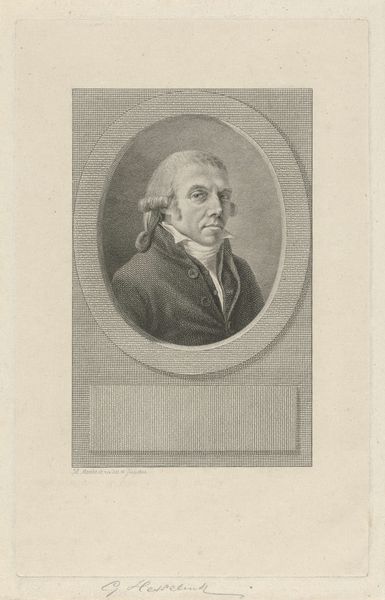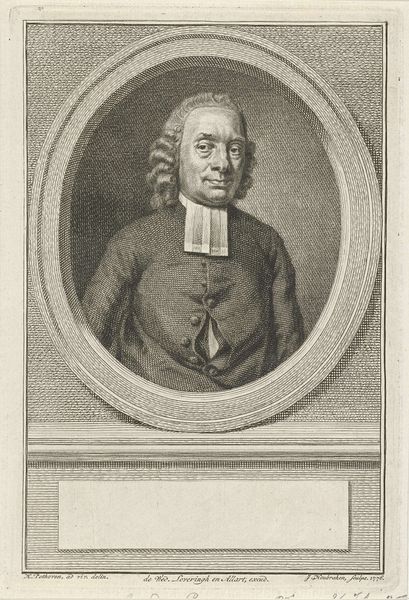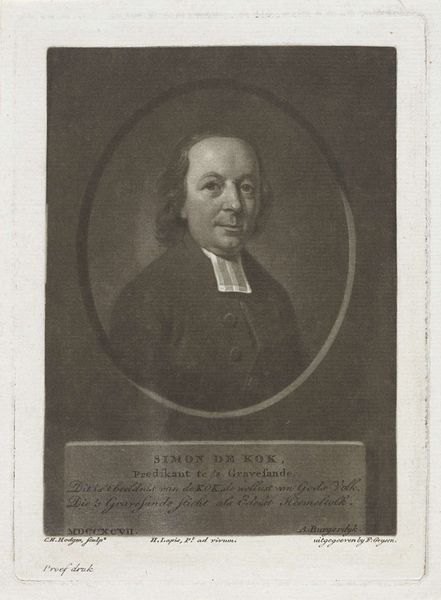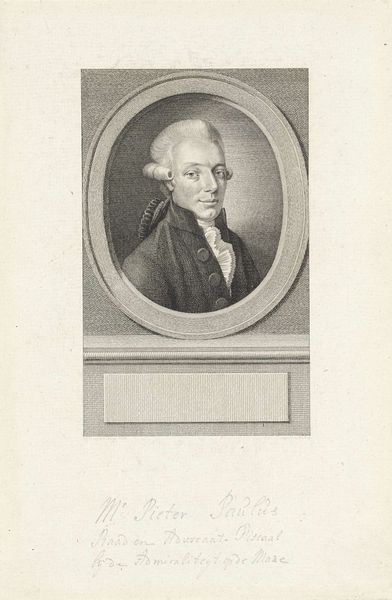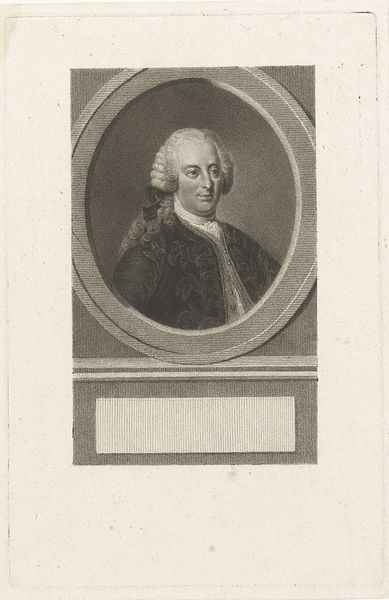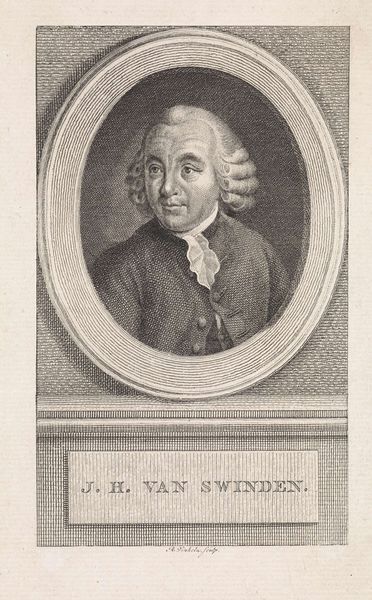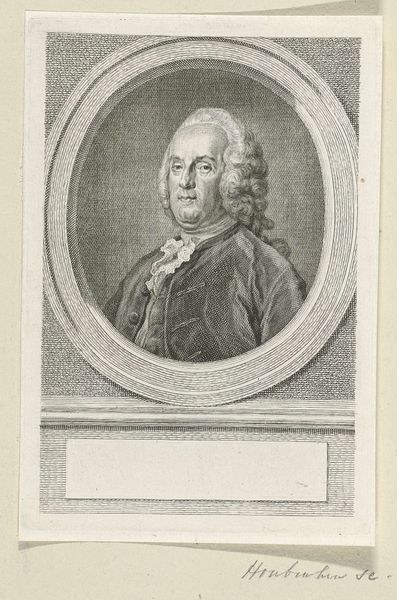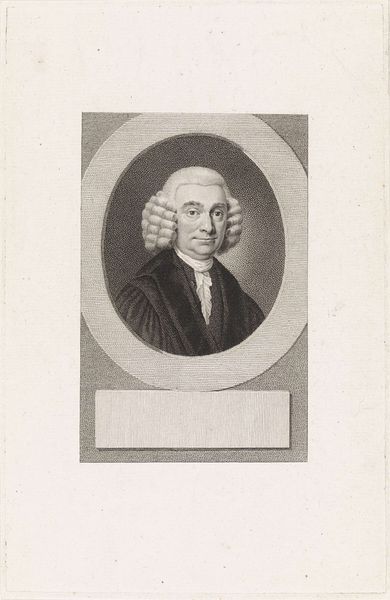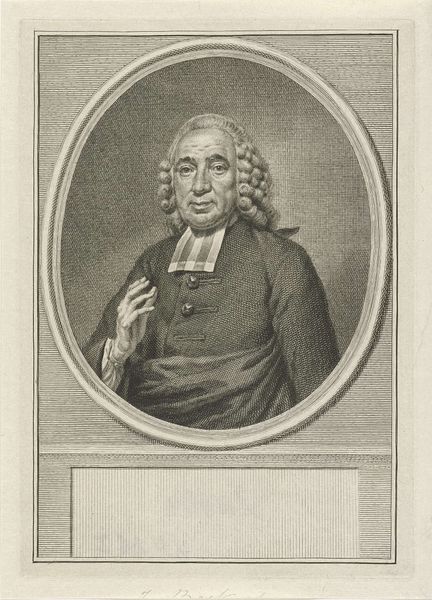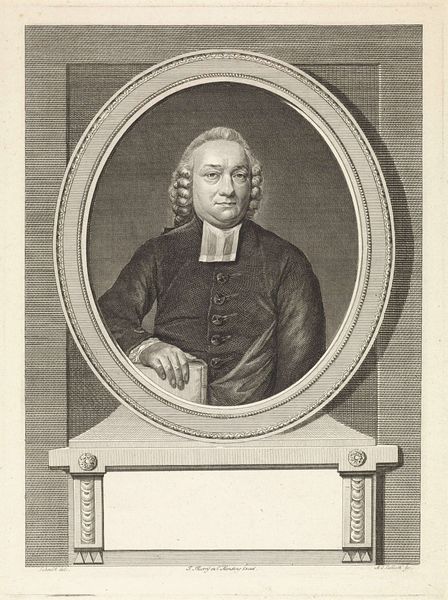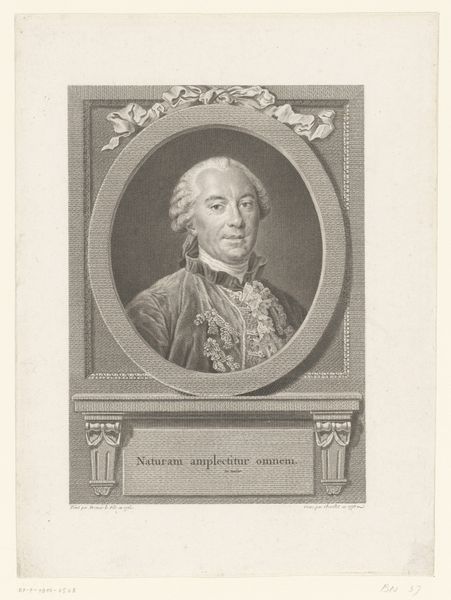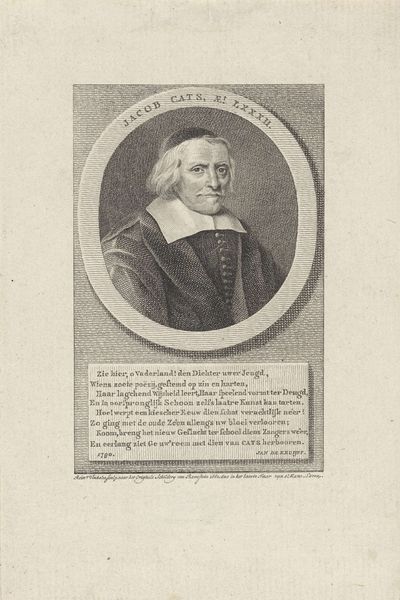
print, engraving
#
portrait
#
neoclacissism
# print
#
old engraving style
#
history-painting
#
academic-art
#
engraving
Dimensions: height 185 mm, width 114 mm
Copyright: Rijks Museum: Open Domain
Lambertus Antonius Claessens created this print of Jean-Marie Roland, likely in the late 18th or early 19th century. Roland was a French economist, inspector of manufactures, and, most notably, a prominent figure in the French Revolution. This image, with its neoclassical frame, presents Roland as a man of the Enlightenment: reasonable, respectable, and learned. But in Revolutionary France, images were tools for shaping public opinion, and portraits could be politically charged. Was this image meant to celebrate Roland's role in the Revolution, or to subtly critique it? The clean lines suggest order, but the subject's slightly quizzical expression leaves room for interpretation. Understanding the political nuances of images like this requires us to delve into the historical context: Who commissioned it? Who was the intended audience? What did Roland represent to different factions within French society? Research into primary sources, like pamphlets and political cartoons, can offer valuable insights into the complex politics of imagery during this tumultuous time.
Comments
No comments
Be the first to comment and join the conversation on the ultimate creative platform.
